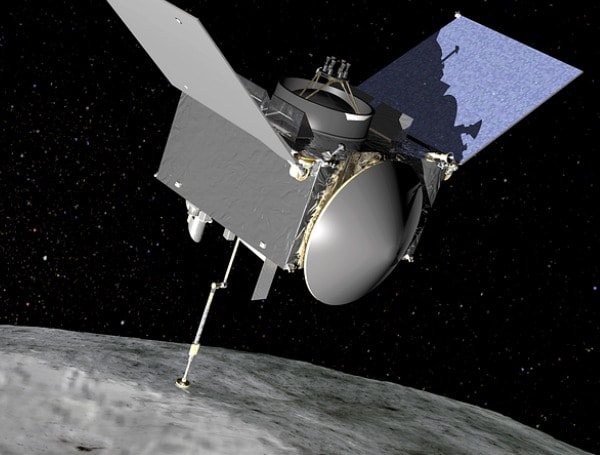After a 200 million mile journey for over two years, the OSIRIS-REx Spacecraft, which launched in September of 2016, has retrieved its sample and is
After a 200 million mile journey for over two years, the OSIRIS-REx Spacecraft, which launched in September of 2016, has retrieved its sample and is finally on its way back home.
The mission, focused on the asteroid Bennu, was sent to collect at least 2 ounces of the asteroid’s surface material. It also scanned the asteroid with its PolyCam instrument to provide a fully mapped rendering of its surface.
As it arrived at the asteroid in 2018, it fired its array of small rocket thrusters to match the velocity of Bennu and begin to survey the asteroid for a potential touch-and-go site.
Bennu provided some trouble to the intended landing, however, as It was discovered that not only was the asteroid releasing small rocks into space, but the landing sites they were surveying were covered in boulders instead of being a relatively flat surface.
The process took over a year as the instruments mapped several sites, but finally, its touchdown site was selected, and the craft proceeded towards the rocky surface.
When it came down to Bennu’s selected site, OSIRIS-REx’s sampling arm fired a burst of nitrogen gas, which allowed the sampler head to collect samples of rocks and surface debris blown into it. It was suggested that the collection head was holding more than 2 ounces of regolith, but there was a possibility that part of the sample could escape from the head through small gaps in the lid where larger rocks were keeping it pried open.
Regardless, the sample collection was a success, but the spacecraft would have to wait for an ideal departure window before it could jettison away from the asteroid and head back to Earth.
Now, after nearly five years out in space, its return home signifies a successful mission – if they can retrieve the sample safely. At 4:23 pm EDT on May 10th, the craft fired its main engines at full throttle for an entire seven minutes to give it a thrust away from the asteroid at 600 miles per hour.
After two orbits around the Sun inside Venus’ orbit, the spacecraft is scheduled to reach Earth on September 24, 2023, where it will release the sample capsule by separating it from the rest of the craft, and it will parachute down to the Utah Test and Training Range, where it will then be retrieved.
From there, the sample will be analyzed for two years at the Johnson Space Center in Houston, Texas, where 11.5 grams will be used for immediate analysis, and 45g will be archived for future generations to analyze if more evolved tools are developed.
As for the OSIRIS-REx Spacecraft itself, it will enter a solar orbit, tracked for another month to determine its trajectory and from there it will be determined if an extended mission to another asteroid is possible with the amount of propellant remaining in the vehicle and remaining funds.
This is the first asteroid sample retrieval mission for NASA and a primitive, carbon-based one at that.
Hopefully, the studies of the returned sample from this ancient time capsule will provide an insight into the formation of our universe and inspire the creation of more advanced analytic tools to further our future scientific research capabilities.
Related News: Amazing Video Footage of Perseverance Landing on Mars

COMMENTS